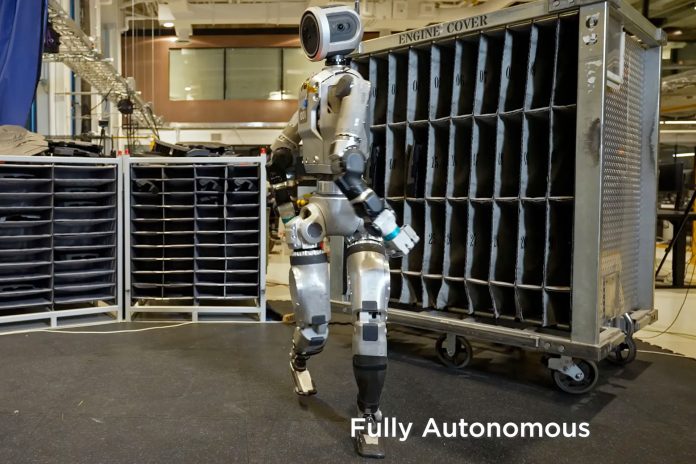Boston Dynamics’ Atlas robot is capturing attention once again, and this time, the company has released a pre-Halloween video showing Atlas autonomously performing tasks with an eerily lifelike twist. With previous video releases demonstrating various maneuvers, this new clip pushes the robot’s capabilities further as it tackles more complex tasks autonomously—no human input, no predefined movements. Instead, Atlas independently manages everything in real-time, adapting to its environment with machine learning vision, force sensors, and a set of proprioceptive sensors.
Atlas, an all-electric humanoid robot, uses a machine learning (ML) vision model to detect and localize objects and obstacles in its surroundings, generating actions and adjusting to unpredictable elements in real-time. Boston Dynamics explains, “There are no prescribed or teleoperated movements; all motions are generated autonomously online. The robot is able to detect and react to changes in the environment (e.g., moving fixtures) and action failures (e.g., failure to insert the cover, tripping, environment collisions) using a combination of vision, force, and proprioceptive sensors.”
What makes this new video stand out is the way Atlas handles these tasks, especially when the scene includes unexpected jump-scare movements—reminiscent of horror film moments, like those from The Exorcist. This comparison isn’t far-fetched; the robot’s ability to twist its torso, neck, hip, and shoulder joints allows for fluid, if somewhat unsettling, movements, which lend Atlas a surreal lifelike quality. For some viewers, the nearly three-minute video might feel more like a Halloween thrill ride than a demonstration of robotic efficiency.
The timing of this release aligns with Boston Dynamics’ research-based trajectory but hints that this model could have practical applications in various industries, especially as more companies like Tesla, Figure, and Agility look toward large-scale humanoid robot production. Using a combination of vision and physical interaction, Atlas demonstrates a level of functionality that suggests more than just research objectives. With the potential for Atlas to learn manual tasks similar to those performed by humans, Boston Dynamics may be taking steps toward commercial deployment.
For now, Atlas remains a research project, but its evolving capabilities continue to suggest a wider range of future possibilities. This latest video not only showcases its potential but also leaves viewers contemplating what such lifelike movement could mean for the future of robotics.
Source: Boston Dynamics



